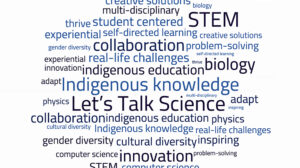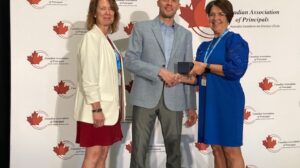Plan a safe, educational, and thrilling experience for your students
“A vast, palpable presence seems to overwhelm the world. The blue sky changes to gray or dull purple, speedily becoming more dusky. . .Birds with terrified cries, fly bewildered for a moment, and then silently seek their night quarters. . . and a sense of hushed expectancy deepens with the darkness. An assembled crowd is awed into silence almost invariably. . . Then out upon the darkness, gruesome but sublime, flashes the glory of the incomparable corona, a silvery, soft, unearthly light, with radiant streamers, stretching at times millions of uncomprehended miles.”
That’s how Mabel Loomis Todd, an American writer and editor, described the experience of a total solar eclipse. She attended several of them with her husband, astronomer David Peck Todd, during the late 19th century.
Total solar eclipses have fascinated, awed, and often terrified people throughout human history. The ancient Greeks took eclipses as a sign that the gods were angry. In ancient China, a dragon was thought to eat the sun. In Korea, it was mythical dogs. Some Indigenous peoples believed that a black raven swallowed the sun.
How Eclipses Happen
Now we know that a solar eclipse happens when the moon is between the sun and the earth. If the alignment is just right, the moon hides the sun, causing the earth to fall dark for several hours. Although the moon is 400 times smaller than the sun, it is also 400 times closer to earth, so we see them as the same size. If the alignment of moon and sun is not perfect, a partial eclipse happens because only part of the sun is hidden by the moon.
In April 2024, many people in Ontario, Quebec and the Atlantic provinces will be able to experience a total solar eclipse, dubbed the Great North American Eclipse. This will be the first total solar eclipse visible anywhere in Canada since February 1979! For many, this may be a once-in-a-lifetime opportunity.
Endless Learning Opportunities
More than just an exciting experience, the eclipse on April 8, 2024, is a way to inspire your students to learn more about our solar system and our planet by engaging in STEM activities. As astronomer Bill Sherwood recently commented, “An eclipse of the sun simply invites the questions ‘why?’ or ‘how do we know?’ Whatever your age, this presents an opportunity to learn.”
Eclipses have driven many scientific discoveries, helping scientists decipher the sun’s structure and explosive events, find evidence for the theory of general relativity, and discover a new element, among other things. Today, scientists continue to make discoveries by observing eclipses. They enable scientists to see a part of the sun’s atmosphere, the corona, that’s too faint to see except when the light of the sun is dimmed. Eclipses can also tell us about the sun’s effects on Earth’s atmosphere.
Let’s Talk Science will work alongside you to make the most of this exciting learning opportunity.
As April is also Earth Month, and there are many opportunities to connect what’s happening in space with what happens here on our planet. “The solar eclipse is about connecting math and physics to predict something we can all see and experience,” says Sherwood. “If we ‘know’ this to be true, we should know that global warming is real and that glaciers are melting and sea levels rising with similar certainty.”
Teaching Resources
Some communities will be in the “path of totality” – the area where the sun will be completely blocked by the moon. Check to see if your school is in the path1. If you’re outside the path, you’ll experience a partial eclipse, also a unique and valuable learning experience.
Here’s how Let’s Talk Science can help you support student learning, wherever you experience the eclipse:
- We’ll provide eclipse teaching resources to support hands-on STEM activities for various age ranges. Our goal is to ensure that all children have an opportunity to participate and learn.
- We’ll also include tips on how to view the eclipse safely (because looking at the sun directly can damage your eyes).
So, get ready for a thrilling eclipse experience with your students – one that will open their eyes to the mysteries of the universe and the joy of STEM. Let’s Talk Science is your partner as we all prepare for the Great North American Eclipse!
1www.letstalkscience.ca/eclipse
Article Provided by Let’s Talk Science











